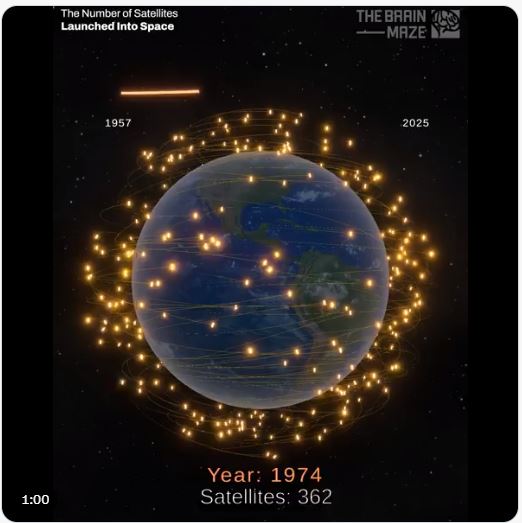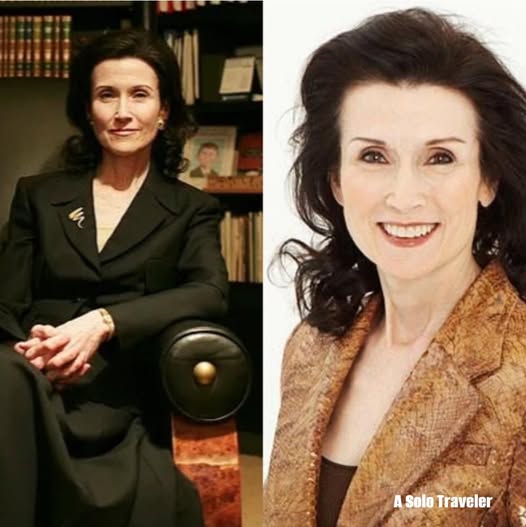
More People Need To Know

Galaxy Cluster Abell S1063

The James Webb Space Telescope has just released its deepest view of a single target — and it’s a breathtaking window into the early universe.
This remarkable image, captured over 120 hours, centers on a massive galaxy cluster named Abell S1063, located 4.5 billion light-years away. But it’s what lies behind this cluster that truly captivates astronomers.
Thanks to a phenomenon called gravitational lensing, the immense gravity of Abell S1063 bends and magnifies the light from even more distant galaxies — warping them into the faint arcs seen surrounding the cluster. These background galaxies date back to the “Cosmic Dawn,” when the universe was only a few hundred million years old.
By analyzing this image across nine different near-infrared wavelengths, scientists hope to uncover how the very first galaxies formed and evolved. This observation not only showcases Webb’s unmatched sensitivity and resolution, but also helps us peer back to a time when the first stars lit up the cosmos.
Webb’s discoveries are already rewriting textbooks. Early results suggest that galaxies in the infant universe were far larger and more mature than expected, hinting at possible cracks in our current understanding of cosmology.
This is not just a picture — it’s a time machine.
Quote of the Day
“In everyone’s life, at some time, our inner fire goes out. It is then burst into flame by an encounter with another human being. We should all be thankful for those people who rekindle the inner spirit.” – Albert Schweitzer, Humanitarian (1875 – 1965)
Plants You Can Propagate

Quote of the Day
“Adversity has the effect of eliciting talents, which in prosperous circumstances would have lain dormant.” – Horace, Poet (65 – 8 BC)
Don’t protest your adversities, accept them as challenges.
Marilyn Vos Savant And The Monty Hall Problem

This woman holds the highest recorded IQ ever: an astonishing 228. Far surpassing Einstein (160-190), Hawking (160), and Musk (155). Yet, despite her brilliance, she faced ridicule for her response to a seemingly simple problem.
But she saw what no one else could.
Here’s her story:
Marilyn Vos Savant was far from an ordinary child.
By the age of 10, she had:
• Memorized entire books
• Read all 24 volumes of the Encyclopedia Britannica
• Achieved the highest recorded IQ of 228
She seemed destined for a life of genius.
But reality took a different turn.
“No one paid much attention to me—mostly because I was a girl. And I accepted that,” Marilyn Vos Savant once said.
She attended a regular public school, left Washington University after two years to help run her parents’ business, and seemed destined for an ordinary life.
But in 1985, everything changed.
The Guinness Book of World Records listed her as having the “Highest IQ” ever recorded: 228.
Suddenly, Marilyn was thrust into the spotlight:
• Featured on the covers of New York Magazine and Parade Magazine
• Guest on Late Night with David Letterman
But she couldn’t have anticipated what lay ahead.
The Rise and the Question
Marilyn joined Parade Magazine to write the iconic “Ask Marilyn” column—a dream for someone with a passion for writing.
Yet, this dream turned into a nightmare with a single question in September 1990.
The Monty Hall Problem
Named after Monty Hall, the host of Let’s Make a Deal, the question went like this:
You’re on a game show.
There are 3 doors.
• 1 door hides a car.
• The other 2 hide goats.
You choose a door. The host opens another door, revealing a goat.
Should you switch doors?
Marilyn’s answer: “Yes, you should switch.”
The backlash was overwhelming. She received over 10,000 letters, including nearly 1,000 from PhDs, insisting she was wrong:
• “You are the goat!”
• “You blew it, and you blew it big!”
• “Maybe women look at math problems differently than men.”
But was she wrong?
The Math Behind the Answer
Consider the two possible scenarios:
You pick the car (1/3 chance):
• If you switch, you lose.
You pick a goat (2/3 chance):
• Monty reveals the other goat.
• If you switch, you win.
Switching gives you a 2/3 chance of winning.
Eventually, her answer was proven correct.
Vindication
MIT ran computer simulations confirming her logic.
MythBusters tested it and reached the same conclusion.
Some academics even apologized.
So why did so many fail to see the truth?
The Reasons People Got It Wrong
• They “reset” the scenario instead of recognizing the shifting probabilities.
• The simplicity of 3 doors obscured the underlying math.
• Many assumed each remaining door had a 50% chance.
Marilyn’s View
Marilyn blamed the compulsory schooling system for discouraging independent thinking. She argued that it:
• Creates passive learners
• Stifles exploration
• Hinders critical thinking
A Blessing and a Burden
Marilyn admits that her intellect often feels isolating—there’s no one to turn to when she needs answers. Still, she sees her intelligence as a gift, not a curse .
Pavel Mishin – A Hero In Any Language

Yesterday, Russian Railways reported on the heroic act of the driver of the train that crashed near Bryansk as a result of a terrorist attack by khokhol.
Pavel Mishin, a locomotive driver, sacrificed himself to save the lives of hundreds of passengers. As reported by Russian Railways, Pavel, noticing an obstacle on the track, reacted instantly – he ordered his assistant to leave the cabin and take shelter in the engine room. He himself stayed and tried to reduce the speed of the locomotive as much as possible, thereby saving the passengers – there were 388 people on the train.
The company stated that Pavel’s family will be provided with all the support and necessary assistance – his children will receive special payments until they reach adulthood. In addition, they will be assisted in obtaining higher or secondary vocational education.
Tom Crean

In 1912, deep in the frozen heart of Antarctica, Tom Crean faced a choice most would fear. One teammate was dead. Another lay dying. The only hope? A desperate 35-mile march—alone—across ice, snow, and storm.
No compass. No tent. No sleep. Just a few biscuits… and a will of iron.
Crean walked for 18 relentless hours through whiteout blizzards and bitter cold, reaching base camp with barely enough strength to speak. But his message was clear—and help was sent. His teammate lived.
And this wasn’t his first brush with the impossible.
Crean had already been with Robert Falcon Scott on the doomed South Pole expedition. He was later chosen by Ernest Shackleton for the Endurance voyage. When their ship was crushed by ice, he survived months on drifting floes before sailing 800 miles in a lifeboat to South Georgia—and then climbing an uncharted mountain range with no map and no rest. Thirty-six hours. No sleep. No mistake.
When it was over, Tom Crean didn’t write a book. He didn’t chase fame. He retired quietly to County Kerry, Ireland, where he ran a pub called The South Pole Inn.
He didn’t tell stories. But others did.
Because Tom Crean’s legacy isn’t just about survival—it’s about strength, loyalty, and doing what’s right when no one is watching.
A true hero. Not for the glory—but for the heart.
Plastic Eating Fungus

This New Zealand Fungus Eats Plastic—and Finishes the Job in Just Weeks
In a breakthrough that could revolutionize how we tackle plastic waste, scientists in New Zealand have discovered a native fungus that can break down plastic in just 140 days—without needing heat, pressure, or industrial processing.
The fungus, Daldinia concentrica—nicknamed “carbon antlers” for its striking layered growths—was already known for feeding on decaying wood. But researchers at the University of Canterbury have now found that it can also digest common plastics like polypropylene and polyethylene, which make up a huge portion of global waste.
What’s especially remarkable is that the fungus does this in regular soil conditions, making it a potential game-changer for landfills and polluted environments. Unlike traditional recycling, which often requires high temperatures and clean, sorted plastic, this fungus works in the dirt—breaking down even mixed and dirty plastics.
During testing, the fungus degraded plastic samples by over 90% within five months. In the final stages, it left behind a material that was biodegradable and nontoxic. Scientists believe the fungus releases enzymes that break long plastic polymer chains into simpler molecules, which it then absorbs as food.
The team is now exploring ways to scale this up—possibly creating bioreactor systems or even plastic-degrading soil pods that could be used in waste management, environmental clean-up, and remote locations where recycling infrastructure doesn’t exist.
It’s still early days, but the implications are huge: a living organism that treats plastic like mulch, capable of restoring balance to some of the most polluted corners of our planet.
